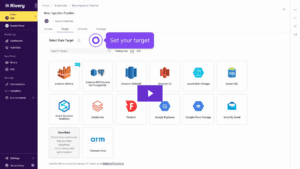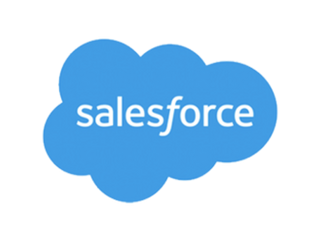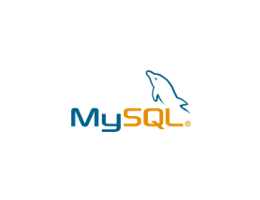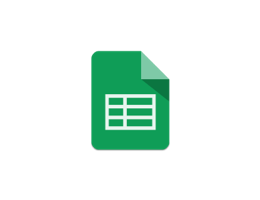Rivery and Sigma allowed us to shift our small data team efforts from chasing an endless queue of ad-hoc data questions to delivering answers through better models in our warehouse that can be easily explored by our data consumers. – Dean Demerrit, Data Analytics and Engineering Manager, SENTA a Shore Capital Partners portfolio company
Key Results:
- 10x users using self-service analytics instead of going through data analysts
- Major savings on external consulting by adopting self-managed Rivery, Snowflake, and Sigma
- Accelerated M&A data integration setup by 200%
Founded in 2019, Southern Ear, Nose, Throat, and Allergy Physicians (SENTA) a Shore Capital Partners portfolio company is a leading community of the finest ENT and Allergy/Immunology specialists in the Southern region, providing strategic, operational, and administrative support to their partner practices, empowering physicians to focus on their patients.
For SENTA, operating at scale is the name of the game. The more partner practices join, the greater the value SENTA can offer back to its community. With SENTA, each practice can optimize its operations using data insights and benchmarks they couldn’t easily access before.
When SENTA acquires a new healthcare practice, a huge piece of this process is consolidating the data into its centralized analytics system where it can manage all of its community data efficiently.
Slow access to data insights
Dean Demerritt became SENTA’s first internal data personnel upon joining as an IT data analyst, while the rest of the data department was outsourced to a third-party vendor managing on-premises MySQL, Apache Nifi, and Power BI, with a team consisting of five data engineers, three data analysts, and a project manager.
As an internal data team of one, Dean had two main responsibilities, helping stakeholders leverage data to answer business questions and consolidating newly acquired practices data into a centralized analytics system. The challenge with acquiring new healthcare practices is each healthcare practice has its own EMR system that manages the clinic operations.
The original approach for stakeholders at SENTA to access data had its flaws. Only a few Internal stakeholders would utilize Power BI reports. If deemed inadequate, they would then request Dean’s assistance, which would involve him writing custom SQL statements in hopes of meeting the stakeholders’ needs.
Dean was managing around 50 ad-hoc requests weekly and at times was unable to answer all of the stakeholders’ requests in the finance and operations departments on time. The prolonged time to adjust Power BI reports as well as the lack of quality in the reports, led the company to be reluctant to use data.
“I couldn’t establish a consistent workflow to engage with stakeholders and grasp their requests. When you receive ten-plus requests a day, efficiency becomes crucial.” – Dean
Furthermore, there was substantial back-and-forth with stakeholders to fulfill their requirements precisely. “I’m not a Senior Power BI engineer or DAX expert. When requests came in to modify reports previously constructed by contractors, I often found myself reverse engineering much of their work.”
Additionally, the process of integrating recently acquired business data into a centralized analytics system typically spanned from two to four weeks, varying based on the specific practice being acquired.
It became evident to Dean and the executive team that the current approach was ineffective and necessitated change. The complexity and lack of ownership over the entire data process slowed Dean from delivering valuable insights to stakeholders on time.
Out with the old in with the new
Dean proposed bringing the data management in-house, not only to save costs but also to exert full control over the entire process. But, before growing the team, Dean had to set up a modern data platform to democratize data across the organization.
Dean had clear guidelines in mind when selecting tooling and made sure each tool in his stack met those guidelines.
- To start, he needed tooling that could quickly justify the return on investment (ROI) of moving data operations in-house.“I needed tooling that I could quickly get up and running to delivering value as well as quickly ramp new hires on” – Dean
- With the ENT practice management software (i.e. EMR) being niche, there typically isn’t a ton of pre-built integrations for those systems. Dean needed tooling that could support ingesting data from any system without hiccups.“We needed to get data from any source regardless if a tool supported it or not.” – Dean
- A huge reason why the team at SENTA was reluctant to use data was mostly an issue of not having immediate access to data. Dean wanted to ensure that his new selection of tooling democratized data across the organization, so stakeholders could answer questions without needing an analyst to write SQL for every request.“We needed to push the data out to SMEs with minimal technical barriers as quickly as possible.” – Dean
After evaluating options, Dean elected to use a modern data platform consisting of:
- Snowflake: For data computing and storage. “Snowflake was a no-brainer choice for our transition to the cloud to modernize our data infrastructure.” – Dean
- Rivery: As an ELT platform. “Rivery was the best option for an ELT platform as it allowed our lean team to swiftly ingest data, build data transformation pipelines, and get up and running in as little time as possible.” – Dean
- Sigma: As the Business Intelligence (BI) platform. “Sigma made the most sense to me since we could structure the data in a semantic layer and push the data out to stakeholders without them having to rely on a data team member to write SQL queries to access the data they need.” – Dean
Outcome – savings, control, and widespread usage of analytics
We implemented Rivery, Snowflake, and Sigma while also initiating the establishment of our in-house data team, marking our transition away from reliance on third-party data services.
Outside of the monetary savings, SENTA gained control over its data management process and optimized its M&A data integration processes to take just 1 week instead of 2-4 weeks.
“Rivery is key because we don’t have to build new pipelines to Snowflake. Whether the data comes from an operational database, CSV files shared via SFTP, a custom connection, or just a data dump into AWS S3, Rivery makes it easy to move it to Snowflake incrementally.” – Dean
Once they acquire a healthcare practice, stakeholders need immediate access to that data. Previously, Dean was writing SQL queries and handing off Excel files to SMEs. This process was not only slow but left stakeholders hesitant to engage with data.
After transitioning to Rivery, Snowflake, and Sigma, Dean commenced data transparency meetings with the executive team to discuss organizational data initiatives.
I drew inspiration from Sigma’s advocacy for data democratization and barrier breakdowns. I aimed to imbue that philosophy throughout the company and garner support for the new system we were developing.
Executives who were once hesitant to engage with data felt as if their opinion was valued, which fostered a sense of collective data ownership.

In less than a year, the chart shows a remarkable shift for SENTA: from merely a dozen individuals consuming legacy reports, to now over 100 people directly accessing data in Sigma.
“Now, hundreds of daily requests are addressed directly by our stakeholders, who have access to the data without the need for analyst intervention.” – Dean
With Rivery, Snowflake, and Sigma SENTA is optimizing the value it offers its community of healthcare providers by accelerating access to data intelligence and reducing operational costs.
Related case studies
















